#parnassia glauca
Photo
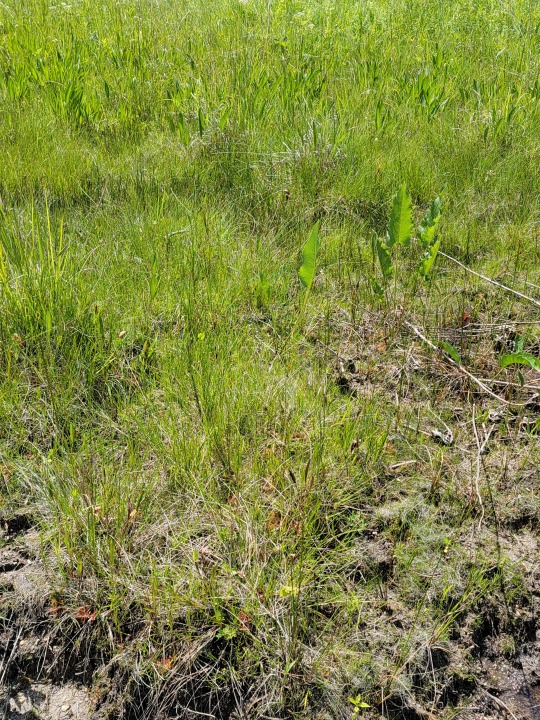
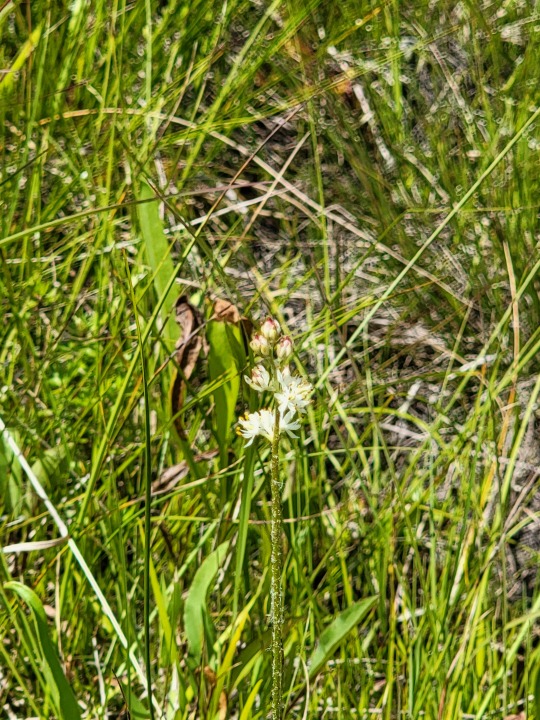




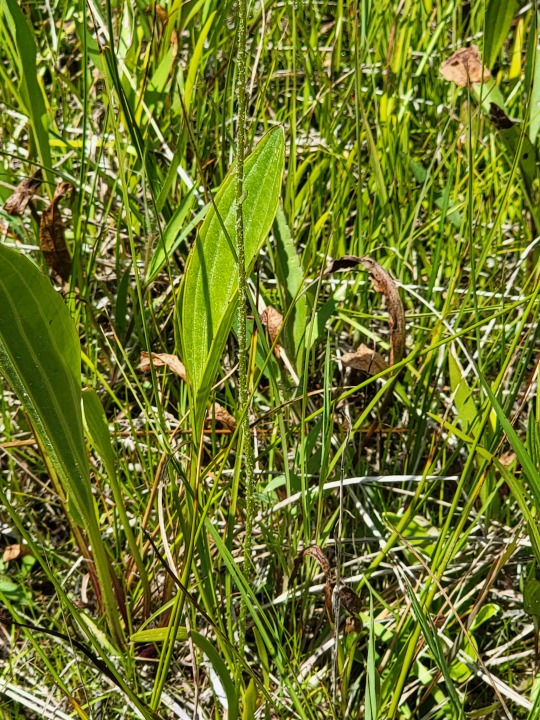
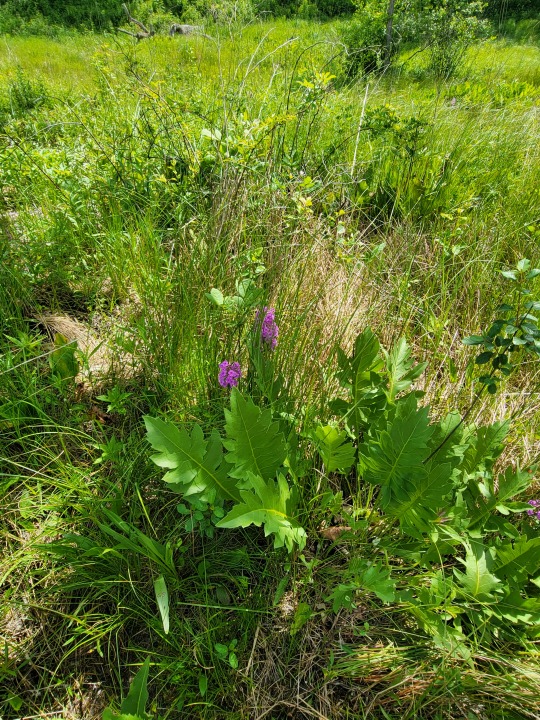


Denizens of the Marl,
My main focus was to introduce an early blooming species that I don’t know if I talked about ever. I usually miss my window to see this plant and for some reason I’ve never gotten close enough to photograph it properly, you can kinda see a gleam of light on the glandular hairs but not well enough to show structure.
Triantha glutinosa, blooms in early June in Ohio but can last till late June and in other states occurs in bogs in warm water conditions and blooms much later which is strange to me. I think this must be an adaptive phenotypical thing but you would expect it to be opposite and light blooming also seems to not be the culprit so I don’t know. False Asphodel is another common name but I honestly prefer calling it sticky or glutinous false ashpodel. As a plant living in these nutrient poor super leached marl flats this plant is a carnivor, protease excretor glandular hair trap specifically, but strangely only on it’s flowering stem and not on it’s minute basal rosette. Opposite of most species that are carnivores most species try to keep traps as far from the flowers as possible which makes sense evolutionary. Glandular traps near an inflorescence seems strange for successful pollination. As it turns out this may be a seldomly pollinated species where most individuals in populations are ancient clones that have formed from rhizome spread overtime in these glacial refugium. The other thing that seems notable is many people studying these false ashpodels (Triantha spp.) run into the same morphology and phenology problems that I have, and have even come to contempt and discourse over specific populations and are evaluating them as part of a biological species complex. I agree on the T. occidentalis western split on all accounts but some of the minor disjunct probable splits seem more complex overall (Central Appalachian mountain populations (TN, VA, SC, GA)
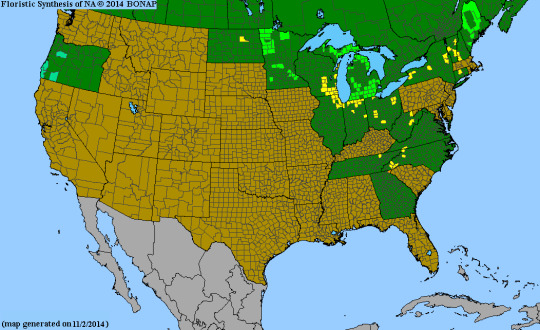
I feel like I can’t stress the importance of this limestone marl and the unique opportunity of getting this close to these plants without any special camera. Though I do wish I had one to display the features properly. Most of the time if you are traversing a fen you have to find and identify petrified marl shelfs or surface travertines, or you are walking on old and ancient tussock clumps from what is usually Carex stricta. Im walking on a displaced gravel shelf with petrified marl and wouldn’t dare to walk off of it and disturb the easily motile banks of loose marl or the suspended marl sediment floating like quick sand. The plants here are fragile and the habitat is equally fragile with many state listed species that cant take damage. Everywhere in the high exposure areas of marl flats are these Drosera rotundifolia and the smooth rounded/heartshaped leaves of grass of parnassas, which is in bloom as I type. Parnassia glauca is so beautiful with it’s unique floral venation and Ill post more pics once again when I get to it. The farther you get from the flats the less exposure and with it comes the sedge meadow with Arnoglossum plantagineum, also known as fen plantain leaved indian plantain. The last few shots are associated with the fully scabrid moderate sized var. ,not species, Silphium terebinthinaceum var. pinnatifidum, which we only see in fens in Ohio and the Ice scoured dwarf willow, Salix myricoides, in all of it’s new leaf glory. Still not looking blue with white pubescent undersides just yet.
Personal note:
Its been really weird doing this lagged posting because these are not matched to the time I was there. Right now, I feel like I should be posting about white bottle gentian, prairie gentian ,fringed gentian or ,andrews bottle gentian and here I am mid June posts. Heck it’s also Spiranthes spp. season and paw paw shaking season rn, most people are smelling sulfur shelves and foraging chicken of the woods(same thing). Trying to catch up and doing documentation and having a place to post personal thoughts on this stuff.
#fens#meadowcore#silphium#salix#salix myricoides#arnoglossum#arnoglossum plantagineum#species complex#carnivourousplant#carnivory#botany#ecology#wildflowers#ohio news#ohio#kawaii#plantblr#botanical#botany on tumblr#plants on tumblr#plants#drosera#drosera rotundifolia#geology#cottagecore#parnassia#parnassia glauca#triantha glutinosa#triantha
24 notes
·
View notes
Note
sawyer what’s ur favourite plant
PINUS STROBUS the eastern white pine 💚




i also like this one parnassia glauca


5 notes
·
View notes
Text

Fen Grass of Parnassus (Parnassia glauca)
9/14/22
16 notes
·
View notes
Photo

Parnassia glauca
https://en.wikipedia.org/wiki/Parnassia_glauca
1 note
·
View note
Photo

Beneath the tall cattails a Grass of Parnassus (Parnassia glauca) flower glistened in the dim morning light.
20 notes
·
View notes
Text

Grass of Parnassus (Parnassia glauca)
5 notes
·
View notes
Photo

Fen Grass-of-Parnassus (Parnassia glauca)
5 notes
·
View notes
Photo

Fen Grass of Parnassus (Parnassia glauca)
The Ridges, WI, 9-9-17
#fen grass of parnassus#flower#wildflower#original photographers#imiging#photographers on tumblr#nature photography
41 notes
·
View notes
Photo







Mantua Bog State Nature Preserve Peck Rd. and E. High St. Mantua, OH 44255 The Mantua Bog State Nature Preserve (or Mantua Swamp) is a 104.8-acre protected wetland in Mantua Township, Portage County, Ohio. It was designated a National Natural Landmark in 1976 and a state nature preserve in 1990, and is composed of groundwater fed wetlands known as fens at the base of sand and gravel kames. The national landmark designation encompasses 285 acres which includes Marsh Wetlands State Nature Preserve, in addition to Mantua Bog State Nature Preserve. The nature preserve includes different types of wetlands including swamp forest, boreal bog, and cattail marshes. Access is by permit from the Division of Natural Areas and Preserves only due to the sensitivity of the wetland. Twenty-four state-listed plants have been identified in the bog including bog bedstraw (Galium labradoricum), autumn willow (Salix serissima), bunchflower (Melanthium virginicum), and small cranberry (Vaccinium oxycoccos). Typical fen species such as shrubby cinquefoil (Dasiphora fruticosa), Canada burnet (Sanguisorba canadensis), grass-of-parnassus (Parnassia glauca) and poison sumac (Toxicodendron vernix) also flourish here. Additionally, in 2000, the Ohio Odonata Survey found a breeding population of the brush-tipped emerald dragonfly (Somatochlora walshii), a state endangered species not previously known to exist in Ohio.
0 notes
Photo



Marl bed obligate and fen obligate,
Parnassia glauca
Fen Grass of Parnassus
12 notes
·
View notes
Photo

A Syrphid Fly (Toxomerus marginatus) cautiously approaches a Grass-of-Parnassus (Parnassia glauca) flower in search of nectar.
35 notes
·
View notes
Photo

In the shadow of towering cattails and sedges the Grass-of-Parnassus (Parnassia glauca) flower blooms brightly. This member of the Saxifrage family is a perennial herb and not a grass. It is found in peaty fens and persistently wet meadows which limits the distribution in Iowa.
21 notes
·
View notes